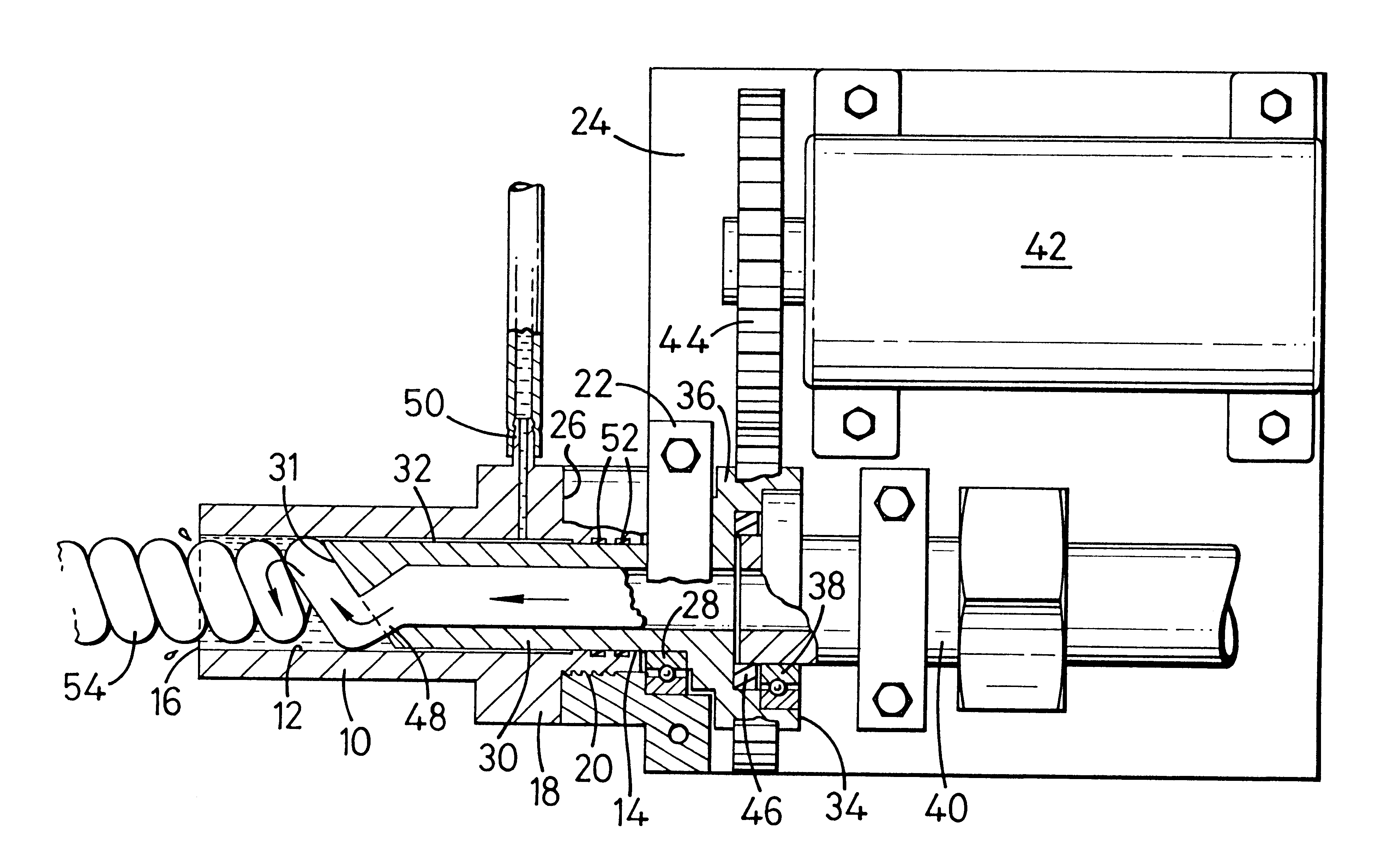Method and apparatus for making an helical food product
a technology of food products and helical plates, applied in the field of skinless, helical food products, can solve the problems of inability to manufacture continuous products, inability to prevent re-annealing, and inadvertently miss surface areas,
- Summary
- Abstract
- Description
- Claims
- Application Information
AI Technical Summary
Benefits of technology
Problems solved by technology
Method used
Image
Examples
Embodiment Construction
, the rusk component was reduced to 8% (as compared with 13.5% in Example 1), and this reduction in carbohydrate content was compensated by including an additional 2.0% collagen fibre. As can be seen, the average expansion of the product of Example 3 on cooking was 20.6%, although the reduction in rusk impaired the organoleptic quality of the product in that texturally it was too soft.
In Example 4, the rusk content was also reduced to 8%, and this reduction in water binding material was compensated for by incorporating a stable vegetable fat emulsion having a total content in the mix of 11.8%. The results for Example 4 illustrate that a protein-stabilized fat emulsion can be used to retain water within the product on cooking by encapsulating the water in the product matrix.
The best results were obtained by using the product mix of Example 1 with a loose coil and vegetable oil as the fluid barrier agent.
The helical products were made from the product mixes of Examples 1 to 4 using ap...
PUM
| Property | Measurement | Unit |
|---|---|---|
| wt % | aaaaa | aaaaa |
| wt % | aaaaa | aaaaa |
| wt % | aaaaa | aaaaa |
Abstract
Description
Claims
Application Information
 Login to View More
Login to View More - R&D
- Intellectual Property
- Life Sciences
- Materials
- Tech Scout
- Unparalleled Data Quality
- Higher Quality Content
- 60% Fewer Hallucinations
Browse by: Latest US Patents, China's latest patents, Technical Efficacy Thesaurus, Application Domain, Technology Topic, Popular Technical Reports.
© 2025 PatSnap. All rights reserved.Legal|Privacy policy|Modern Slavery Act Transparency Statement|Sitemap|About US| Contact US: help@patsnap.com



